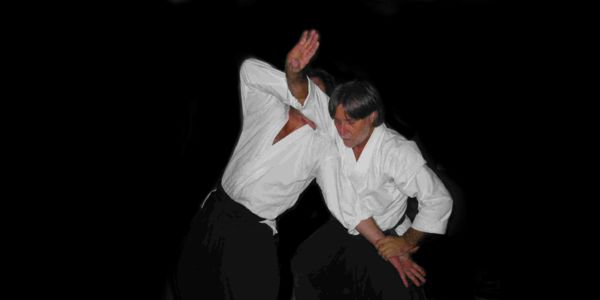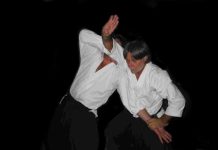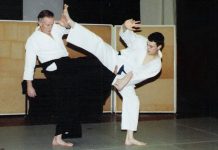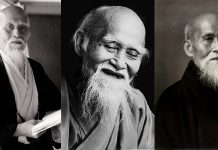You can’t learn much about aikido just by reading. Many hours of practice and experiment are needed before the ideas presented here will have much meaning. On the other hand, almost from the outset, it may be helpful to have certain concepts in mind as you practice. Accordingly, what I attempt in this paper is to pull together the basic ideas and principles of this art to orient beginners during their first few years of training. I do not attempt to explain specific aikido techniques; such descriptions are readily available elsewhere. Rather, I will try to explain some ideas and aikido principles behind the art ideas that make aikido techniques effective, and that make the style what it is. They also happen to be the ideas and principles that make aikido truly meaningful and useful today, because they can be applied off the mat, in ordinary life situations where hand-to-hand combat is not a serious possibility.
It scarcely needs saying that what follows is just one practitioner’s view. Though I have practised, taught and thought about aikido for 35 years, I would scarcely claim to understand its principles fully, still less to apply them perfectly in the instant of an attack, whether physical or verbal. Therefore, what I write will be, in part, a display of ignorance, whatever else it is. My excuse, if it is one, is that to-date, I have not found a comparable treatment of these basics in a bookstore or on the Web. If this piece clarifies my own understanding, helps students who read it more than it confuses them, and irritates someone more competent than myself into doing a better job, it will have served its purpose.
The paper is not intended for complete beginners, who are likely to find it overwhelming, but primarily for students who have had a year or so of training. Students at this stage will have learned to survive on a tatami, and will know (more or less) where their hands and feet go in executing basic techniques. However, they will still be inclined to think of aikido in just that way as so many different techniques. They will have little awareness as yet of the unity of the art, nor of the factors that make the difference between a well and a poorly executed technique, nor of the need to transcend technique altogether. In short, they will not have had more than a glimpse of what aikido has to teach. My intention, therefore, is to offer my own understanding of the art’s theory in a more compact and coherent way than would be possible on the mat. Please be patient with yourself (and with your instructor) if many of these ideas go over your head on a first reading. I did not get them all at once like this, and neither did anyone else. To use this paper to best advantage, I’d suggest you read it through, taking what you can from it, and comparing what is said here with what you have heard from your instructor. Then use it for reference, or re-read it from time to time, when you feel need to do so. Discuss any issues that occur to you with your instructor and/or a senior student.











